Summer heat in Taiwan could result in up to a 41.3 percent reduction in productivity, according to a joint study by Academia Sinica’s Research Center for Environmental Changes, the Ministry of Labor and Harvard University’s T.H. Chan School of Public Health.
The paper was published in the journal Nature Cities on July 29.
The joint research team, which included Academia Sinica’s Lung Shih-chun (龍世俊), visited 101 construction workers across 10 different work sites in Taipei and New Taipei City to research how environmental heat stress affected them.
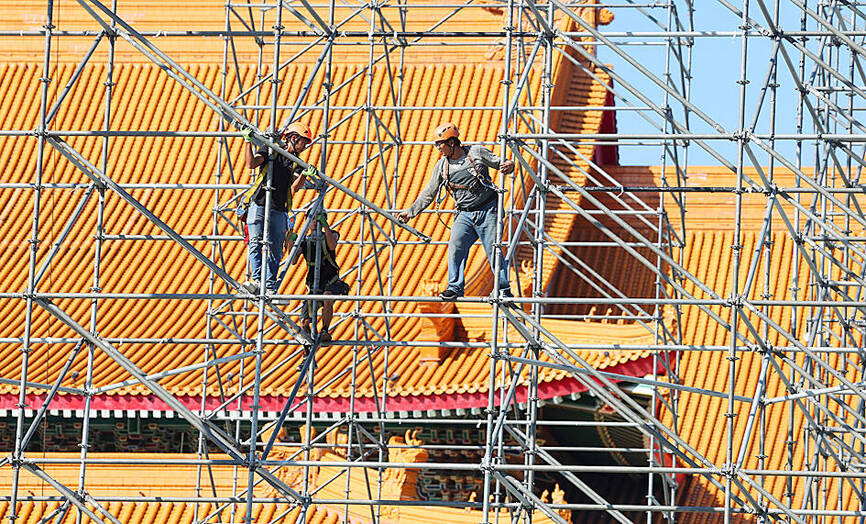
Photo: CNA
The data generated from on-site visits were referred to the Harvard team, who calculated the lost productivity based on temperatures and other statistics.
The construction industry is a labor-intensive industry where workers often work outdoors for long periods, Lung said, adding that laborers were assigned three categories — light, medium and heavy — based on their tasks.
Productivity loss due to environmental heat across all three categories was at 29 percent to 41.3 percent, she said.
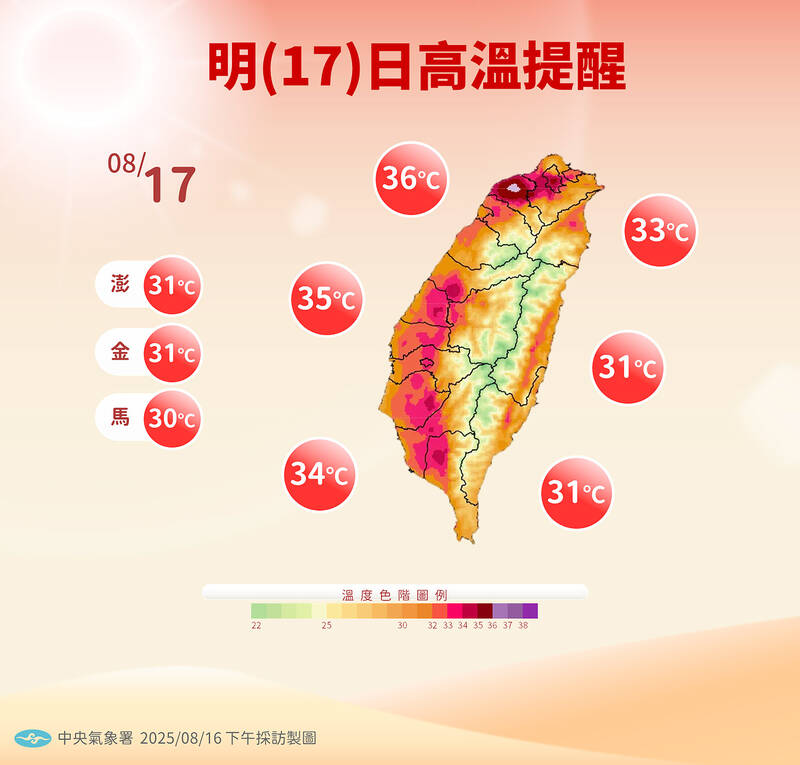
Photo courtesy of the Central Weather Administration
The study showed that the productivity of workers in a high-heat and high-humidity environment would drop by one-third to 50 percent, Lung said.
If a worker is able to carry 100 bricks under normal circumstances, they could only carry 59 to 71 when it is hot and humid, she said.
Workers could also face an increased risk of experiencing heat stroke or other heat injuries due to environmental heat stress, she said.
Loss of productivity could delay construction, which would cause a drop in competitiveness, she added.
As workers should not be exposed to an outdoor environment for at least a month after experiencing heat stroke, such an incident would affect a worker’s income negatively, she said.
Lung said she hoped her article would provide the ministry with a reference to adjust regulations and reduce the risk of workers sustaining heat-related injuries.
Employers could adjust working times to reduce environmental heat stress and help maintain work productivity, she added.
In related news, the Central Weather Administration (CWA) yesterday issued an orange heat alert for Taoyuan, indicating highs of 36°C for three straight days.
The CWA also issued a “yellow” warning for Hsinchu City, and Hsinchu and Miaoli counties in the north, and Pingtung County in the south, meaning temperatures could reach or exceed 36°C.
The heat is expected to continue today before thicker cloud cover decreases temperatures slightly tomorrow, the CWA said, adding that they would range between 32°C and 35°C across Taiwan.
Citing the latest data from the European Centre for Medium-Range Weather Forecasts, independent meteorologist Daniel Wu (吳德榮) said a tropical disturbance is likely to emerge southeast of Taiwan and another could form in the South China Sea in the coming days.
However, more time is needed to see whether the two tropical disturbances would strengthen into typhoons and whether they would affect Taiwan, he said.
Additional reporting by CNA
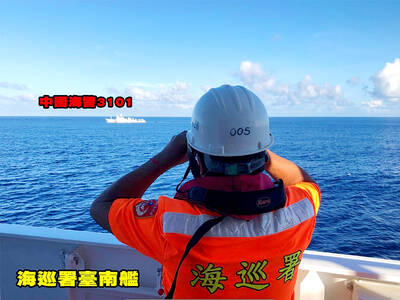
The Coast Guard Administration (CGA) yesterday said it had deployed patrol vessels to expel a China Coast Guard ship and a Chinese fishing boat near Pratas Island (Dongsha Island, 東沙群島) in the South China Sea. The China Coast Guard vessel was 28 nautical miles (52km) northeast of Pratas at 6:15am on Thursday, approaching the island’s restricted waters, which extend 24 nautical miles from its shoreline, the CGA’s Dongsha-Nansha Branch said in a statement. The Tainan, a 2,000-tonne cutter, was deployed by the CGA to shadow the Chinese ship, which left the area at 2:39pm on Friday, the statement said. At 6:31pm on Friday,
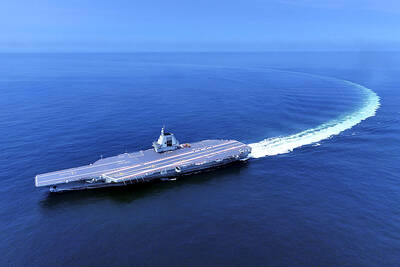
The Chinese People’s Liberation Army Navy’s (PLAN) third aircraft carrier, the Fujian, would pose a steep challenge to Taiwan’s ability to defend itself against a full-scale invasion, a defense expert said yesterday. Institute of National Defense and Security Research analyst Chieh Chung (揭仲) made the comment hours after the PLAN confirmed the carrier recently passed through the Taiwan Strait to conduct “scientific research tests and training missions” in the South China Sea. China has two carriers in operation — the Liaoning and the Shandong — with the Fujian undergoing sea trials. Although the PLAN needs time to train the Fujian’s air wing and
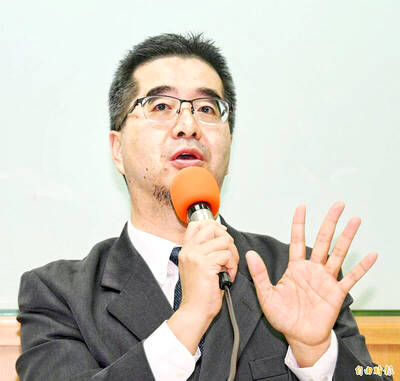
The American Institute in Taiwan (AIT) put Taiwan in danger, Ma Ying-jeou Foundation director Hsiao Hsu-tsen (蕭旭岑) said yesterday, hours after the de facto US embassy said that Beijing had misinterpreted World War II-era documents to isolate Taiwan. The AIT’s comments harmed the Republic of China’s (ROC) national interests and contradicted a part of the “six assurances” stipulating that the US would not change its official position on Taiwan’s sovereignty, Hsiao said. The “six assurances,” which were given by then-US president Ronald Reagan to Taiwan in 1982, say that Washington would not set a date for ending arm sales to Taiwan, consult
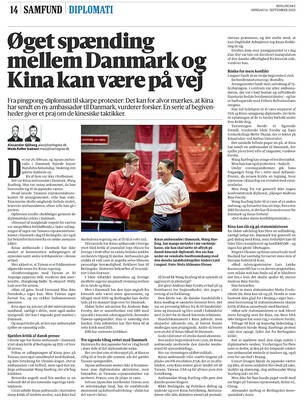
A Taiwanese academic yesterday said that Chinese Ambassador to Denmark Wang Xuefeng (王雪峰) disrespected Denmark and Japan when he earlier this year allegedly asked Japan’s embassy to make Taiwan’s representatives leave an event in Copenhagen. The Danish-language Berlingske on Sunday reported the incident in an article with the headline “The emperor’s birthday ended in drama in Copenhagen: More conflict may be on the way between Denmark and China.” It said that on Feb. 26, the Japanese embassy in Denmark held an event for Japanese Emperor Naruhito’s birthday, with about 200 guests in attendance, including representatives from Taiwan. After addressing the Japanese hosts, Wang